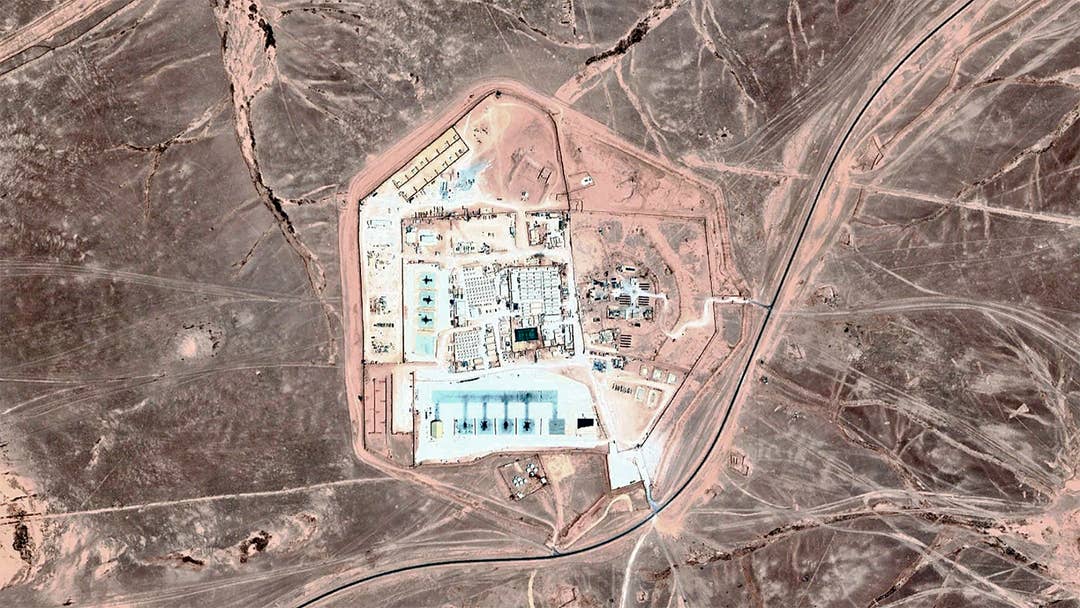The drone used to attack the ‘Tower 22’ US military outpost in Jordan by Iran-backed militias that killed three American soldiers could not be detected since the unmanned aerial vehicle (UAV) was mistaken for a friendly aircraft.
The drone traveled and hid itself behind another friendly remotely piloted aircraft, because of which it remained undetectable, reports claimed.
The incident has led to an outrage in certain sections of the American political establishment, who have been clamoring for striking Iran and launching a full-scale war.
Will the US Hit Iran?
The political and military leadership has, however, not yet shown any inclination towards attacking Iran directly, given its current engagement in the Red Sea against the Yemen-based Houthis, arming Israel in its war with Hamas and supplying military aid to Ukraine and Taiwan.
Attacking Iran directly would entail a “massive escalation and not something the US would consider lightly,” said a BBC report.
“It is doubtful, although not inconceivable, that the US retaliation would include hitting targets on Iranian sovereign territory. (But) neither Washington nor Tehran want to get into a full-scale war, and both have said so. Iran’s response could well include attempting to close the economically vital Strait of Hormuz, through which 20% of the world’s oil and gas flow. (Thus) the challenge for the US is to find the right balance between deterrence and escalation.”
Nevertheless, it has made a formal announcement of retribution. President Joe Biden vowed to hold all those responsible “at a time and in a manner of our choosing.”
Moreover, Washington also does not have definitive proof that Iran was behind the attack and suggests that militia planned and operated the strike independently. During a routine media briefing, the Pentagon spokesperson responded when asked if they had clear, conclusive evidence of active Iranian hand that they “only know…as a general matter that…Iran…the Iranian Revolutionary Guard Corps (IRGC) funds these groups…the Kataib Hezbollah, but (we) don’t have more to share.”
‘Drone Hid Behind Drone’
A report on Politico quoted an unnamed Department of Defense (DoD) official, who said that the enemy drone launched by Iranian proxies “evaded detection by trailing a US drone that was returning to the base in Jordan at the same time.”
The attackers saw an “opportunity” and “exploited” it. The incident dramatically escalated the situation in the Middle East, renewing pressure on the Biden administration to respond more forcefully to the more than 160 attacks on US troops in Iraq, Syria, and now Jordan. More than 30 service members were injured in the attack, including several who were diagnosed with traumatic brain injury (TBI).
Officials also said that an hour and a half after the strike on Tower 22, Iranian proxies launched another drone at a US base just across the border in Syria, al-Tanf Garrison. A US drone, RTX’s Coyote uncrewed aerial system, shot it down. Tower 22 and al-Tanf Garrison are just kilometers apart.
Coyote is a tube-launched, expendable, lightweight counter-drone system. It is a jet-powered missile released from a vehicle-mounted box launcher. The US Army had selected it as a “near-term counter-UAS solution.”
Tower 22 is a small outpost typically housing only 300 to 350 troops, said retired Gen. Joseph Votel, who served as head of US Central Command from 2016 to 2019. The base in Jordan sits close to the triple border with Syria and Iraq and is attached to the Rukban refugee camp.
The base serves as a crossing point for U.S. special operations forces moving into Syria and is a logistics hub supporting the fight in Syria against the Islamic State, Votel said. US training of Jordanian forces also takes place there, he said.
The living quarters at Tower 22 are “very temporary,” he said. “You would not find brick-and-mortar buildings at a location like that.”

Possible Tactics
It is not clear how the attacking drone followed the US-friendly UAV, but a few inferences can be drawn about the tactic based on the reports. For one, the attack drone would most likely have been a manually controlled aircraft, given that such dexterous controls of perfectly tailing another aircraft cannot be possible via autonomous or semi-autonomous controls.
Secondly, the drone might have an electro-optical system since “trailing” the US drone would require non-linear sight visual identification.
Thirdly, the Iranian-linked militia operators would have also been carefully observing movements at the US base to know its troop movements, rotations, and drone surveillance flight timings and durations.
Upon determining these things, the militia operators would have maneuvered their drone from an angle (possibly from the top) with a blindspot for the American drone’s electro-optical system.
- The author can be reached at satamp@gmail.com
- Follow EurAsian Times on Google News